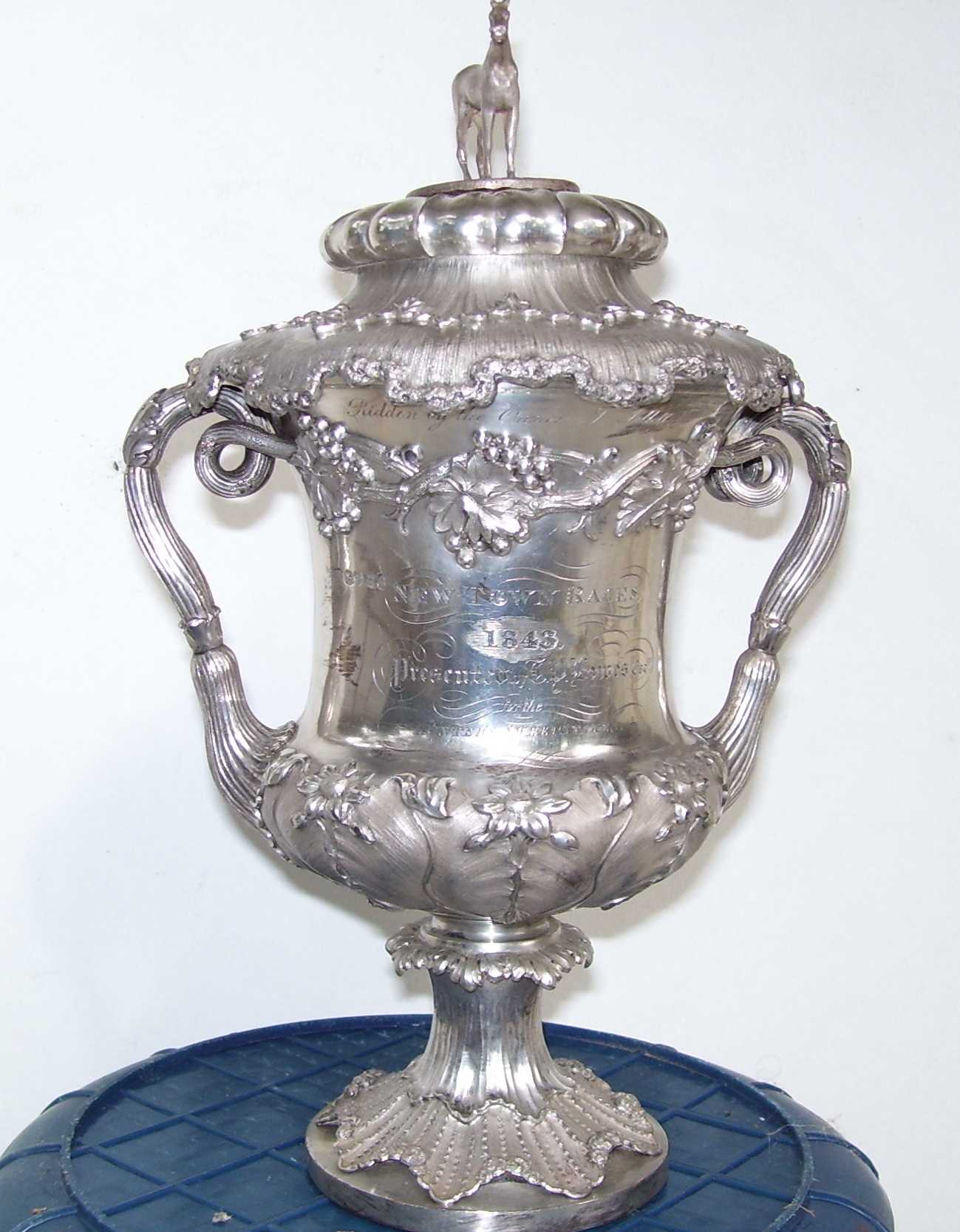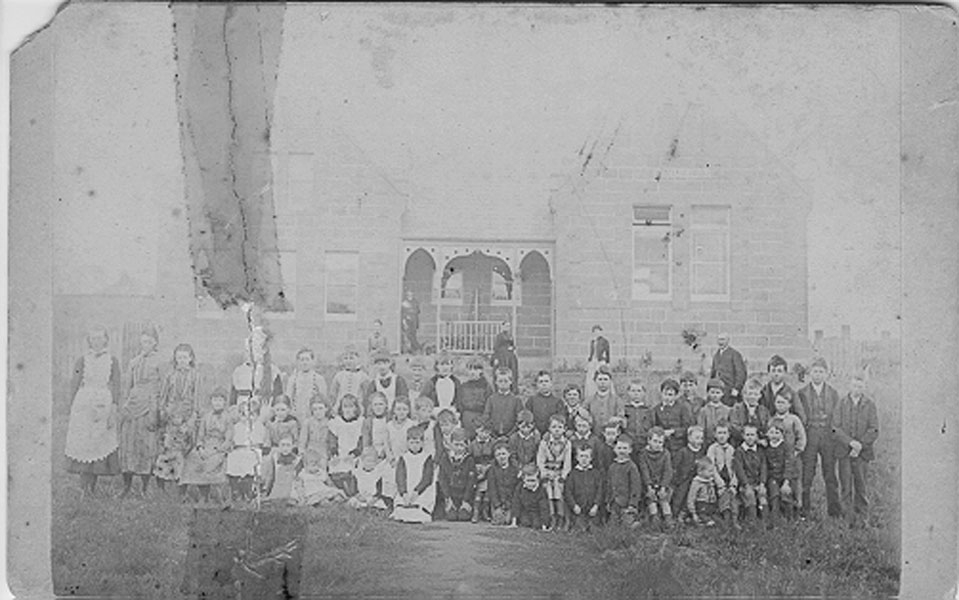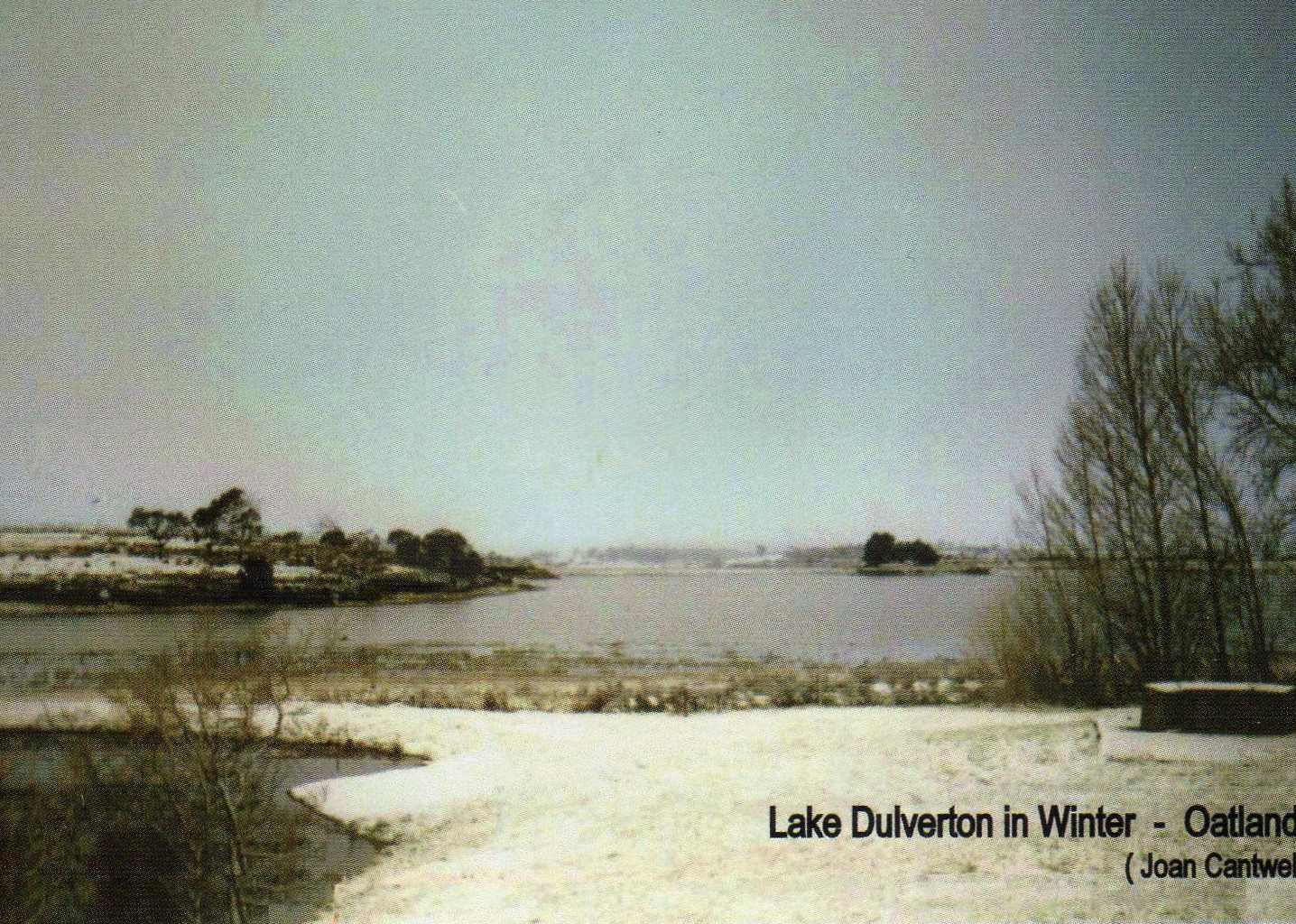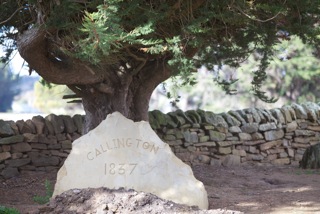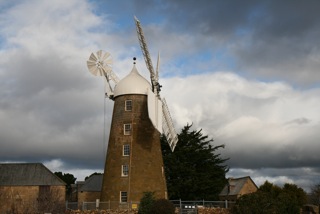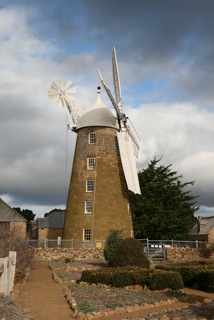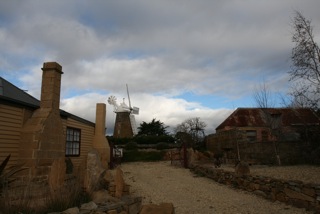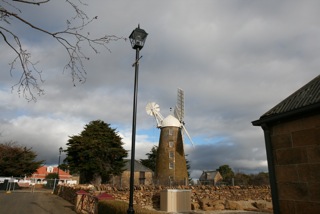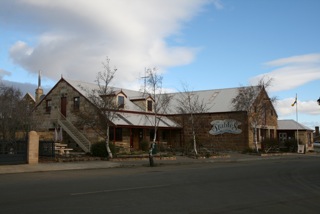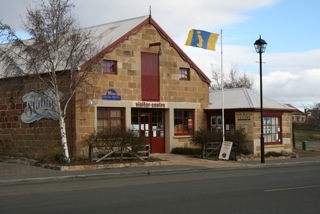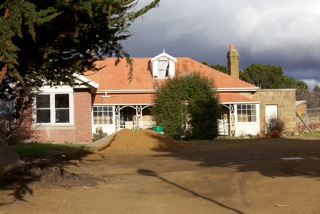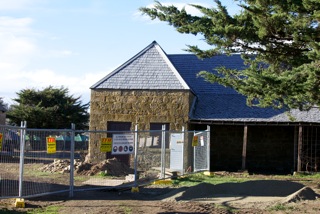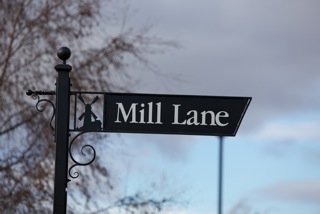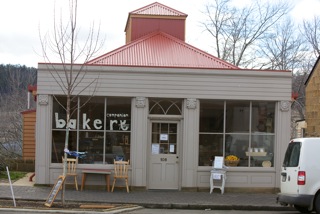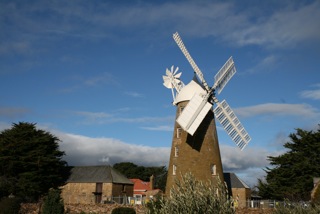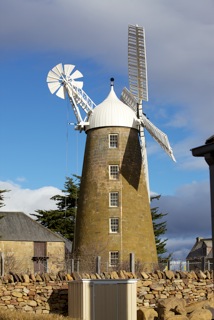
Oatlands the home of Thomas and Mary Ann Jillett
OATLANDS THOMAS JILLETT’S HOMETOWN
Governor Macquarie first passed through the district in 1811. However it was not until ten yars later on June 3, 1821, that Macquarie named the site “Oatlands” as he considered it “a very eligible situation for a town, being well watered and in the midst of rich fertile country.”
Until 1827 Oatlands remained little more than a site with a board bearing the name given by Macquarie. There were some early settlements, including a military detachment station in 1825.
Under the eye of Governor Arthur, streets were marked out, trees and scrub cleared away and a detachment of troops was sent to guard the farmers and tradespeople who were beginning to settle the area. The troop’s main duty was to guard the 35 skilled tradesmen, who had been sent to lay the foundations of the new village, against the natives. When the threat passed, the troop was disbanded. Later some of these men returned to make Oatlands their home, and of those who did return some were skilled stonemasons and carpenters, whose work is still admired in the old burildings today.
The goal and houses for the staff, as well as accommodation for the chain gang working on the main road had been constructed before the soldiers departed.
Governor Macquarie saw the need for a road to join the northen and southern settlements during his vfirst visit in 1811. The next year he sent James Meehan, his surveyor general to peg out and chain the road from Port Dalrymple (now George Town) to Hobart, marking four sites along the road which he had chosed to be military posts. These included Launceston, Perth, Oatlands and Brighton. This road was not completed until 1837, but was used well before that time.
By 1829, several very respectable” people had applied to the government for building blocks, and a local brewery was under construction. With the abundance of good cheap building material close at hand, buildings took shape at great speed.
In 1832 a survey of the town was undertaken by Surveyor Sharland, who marked out over 50 miles and 400 acres of streets, as he had visualised Oatlands to be the capital city of Tasmania.
Much of Oatlands development took place in the 1830’s and today many residents still live in these historic buildings. Stone for building was available in almost unlimited quantities, and was quarried near the edge of Lake Dulverton at Mill Point, and clay for brick making was discovered in land later to be named Burbury’s Hill. Oatlands remains one of the finest examples of an historic village in Australia.
The Municipality of Oatlands was proclaimed in 1861, and remained until 1993 when it was absorbed into the Southern Midlands Council.
In 1877, Oatlands boasted seven hotels, three breweries and an aerated water factory
The above information is courtesy of the Heritage Highway Visitor Centre, High Street Oatlands.
Further information from Heritage Tasmania reveals that “It is believed that the town has the largest number of intact examples of Georgian sandstone architecture in any village in the southern hemisphere. The military precinct buildings - the jail, courthouse, watch house, superintendent’s quarters cottage and commissariat are examples of this.” Built in 1834 the jail was built to house 200 offenders but never heldlmore than 70 prisoners. It was the largest regional colonial jail in Van Diemen’s Land and 18 inmates were hanged before the facility was downgraded. It was demolished in 1937 - and the town pool was built over the site in 1954!
Most of the buildings in the High Street are Heritage Listed, and it is a fine example of a heritage town, where one feels as though they have just stepped back in time. It really is a delightful place to visit.
Thomas Jillett owned the Callington Mill and numerous buildings in the town in the mid 1800’s.
Thomas petitioned for the commencement of the Council, and was a councilor.
He was also an influential member of the Turf Club and owned and raced many horses.
Silver cup won by Thomas in 1842 (now in the care of Adam Jillett one of his grandsons.
Children at Oatlands School in the 1870/80's. There would be a lot of Jillett children in this photo!
OATLANDS THOMAS JILLETT’S HOMETOWN
Governor Macquarie first passed through the district in 1811. However it was not until ten yars later on June 3, 1821, that Macquarie named the site “Oatlands” as he considered it “a very eligible situation for a town, being well watered and in the midst of rich fertile country.”
Until 1827 Oatlands remained little more than a site with a board bearing the name given by Macquarie. There were some early settlements, including a military detachment station in 1825.
Under the eye of Governor Arthur, streets were marked out, trees and scrub cleared away and a detachment of troops was sent to guard the farmers and tradespeople who were beginning to settle the area. The troop’s main duty was to guard the 35 skilled tradesmen, who had been sent to lay the foundations of the new village, against the natives. When the threat passed, the troop was disbanded. Later some of these men returned to make Oatlands their home, and of those who did return some were skilled stonemasons and carpenters, whose work is still admired in the old burildings today.
The goal and houses for the staff, as well as accommodation for the chain gang working on the main road had been constructed before the soldiers departed.
Governor Macquarie saw the need for a road to join the northen and southern settlements during his vfirst visit in 1811. The next year he sent James Meehan, his surveyor general to peg out and chain the road from Port Dalrymple (now George Town) to Hobart, marking four sites along the road which he had chosed to be military posts. These included Launceston, Perth, Oatlands and Brighton. This road was not completed until 1837, but was used well before that time.
By 1829, several very respectable” people had applied to the government for building blocks, and a local brewery was under construction. With the abundance of good cheap building material close at hand, buildings took shape at great speed.
In 1832 a survey of the town was undertaken by Surveyor Sharland, who marked out over 50 miles and 400 acres of streets, as he had visualised Oatlands to be the capital city of Tasmania.
Much of Oatlands development took place in the 1830’s and today many residents still live in these historic buildings. Stone for building was available in almost unlimited quantities, and was quarried near the edge of Lake Dulverton at Mill Point, and clay for brick making was discovered in land later to be named Burbury’s Hill. Oatlands remains one of the finest examples of an historic village in Australia.
The Municipality of Oatlands was proclaimed in 1861, and remained until 1993 when it was absorbed into the Southern Midlands Council.
In 1877, Oatlands boasted seven hotels, three breweries and an aerated water factory
The above information is courtesy of the Heritage Highway Visitor Centre, High Street Oatlands.
Further information from Heritage Tasmania reveals that “It is believed that the town has the largest number of intact examples of Georgian sandstone architecture in any village in the southern hemisphere. The military precinct buildings - the jail, courthouse, watch house, superintendent’s quarters cottage and commissariat are examples of this.” Built in 1834 the jail was built to house 200 offenders but never heldlmore than 70 prisoners. It was the largest regional colonial jail in Van Diemen’s Land and 18 inmates were hanged before the facility was downgraded. It was demolished in 1937 - and the town pool was built over the site in 1954!
Most of the buildings in the High Street are Heritage Listed, and it is a fine example of a heritage town, where one feels as though they have just stepped back in time. It really is a delightful place to visit.
Thomas Jillett owned the Callington Mill and numerous buildings in the town in the mid 1800’s.
Thomas petitioned for the commencement of the Council, and was a councilor.
He was also an influential member of the Turf Club and owned and raced many horses.
Silver cup won by Thomas in 1842 (now in the care of Adam Jillett one of his grandsons.
Children at Oatlands School in the 1870/80's. There would be a lot of Jillett children in this photo!
John Jillett Jnr owned the Midlands Hotel and it was run by his son after his death
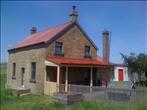
Oatlands stands on the shore of Lake Dulverton, previously known as The Big Lagoon, Stinking Lagoon and later Lake Frederick.
Once a popular fishing area and host to many acquative events it was dry from 1994 to 2001 due to the drought.
It covers 233 hectares, and approximately 1 hectare of the lake has been filled using bore water and contained by a bund wall.
The area has been re-stocked for fishing and to encourage the return of native birds back to the sanctuary.
The island in the centre is known as Mary’s Island, as it was named after Mary Anstey (wife of Thomas Anstey, the Police Magistrate).
Once a popular fishing area and host to many acquative events it was dry from 1994 to 2001 due to the drought.
It covers 233 hectares, and approximately 1 hectare of the lake has been filled using bore water and contained by a bund wall.
The area has been re-stocked for fishing and to encourage the return of native birds back to the sanctuary.
The island in the centre is known as Mary’s Island, as it was named after Mary Anstey (wife of Thomas Anstey, the Police Magistrate).

